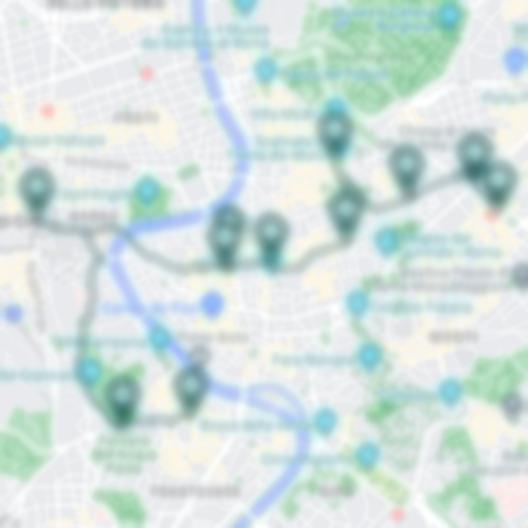Diving into the heart of one of Rome’s lesser-known yet historically profound basilicas may unlock experiences rich with art, history, and spirituality. The Basilica of San Pietro in Vincoli, translating to “Saint Peter in Chains,” stands out as a monumental treasury within the Italian capital. This religious site, steep in history, isn’t just another basilica in Rome; it’s a rendezvous with the past, a journey through captivating narratives, and a direct encounter with artistic masterpieces.
Unveiling the Historical Saga
The roots of San Pietro in Vincoli stretch back to the 5th century. Its intriguing name stems from the chains that supposedly bound Saint Peter during his imprisonment in Jerusalem—chains that, according to legend, were miraculously fused with those from his subsequent Roman confinement upon comparison by Pope Leo I. This church originally rose through the efforts of Empress Eudoxia, a gift to Rome that encapsulated a divine story of faith, resilience, and unity. The structure we are drawn to today owes its existence to several periods of careful reconstruction and artistic augmentation, blending the past seamlessly with the legacy of faith.
As time seared its mark upon the edifice, San Pietro in Vincoli experienced transformations that ushered in elements of Renaissance brilliance and Baroque flair. Notable guardians of the church, such as Pope Adrian I and Cardinal Della Rovere, initiated renovations that would forever etch San Pietro in Vincoli’s place in the annals of art and architecture. Each addition, from the commanding portico attributed to Baccio Pontelli to the harmonious cloister by Giuliano da Sangallo, narrates a chapter of the burgeoning Renaissance spirit.
A Sanctuary of Artistic Genius
Rarely does a church harbor a fusion of artistic marvels that speak volumes of history’s greatest talents as San Pietro in Vincoli does. Among the treasures held within its sacred precincts is the profound statue of Moses by Michelangelo. Initially conceived as a segment of Pope Julius II’s grandiose tomb, this masterpiece transcends the bounds of sculpture to become a testament to the towering genius of Michelangelo. Depicting Moses with horns, a misunderstood symbol of divinity, the statue embodies the intense emotion and profound narrative strength characteristic of Michelangelo’s work.
But the artistic rendezvous doesn’t end with Michelangelo. The basilica is a sanctuary for the art aficionado, hosting works that encompass the talents of Guercino, Domenichino, and even the detailed tombs designed by Renaissance heavyweights like Andrea Bregno and Antonio Pollaiuolo. Each piece, from frescoes capturing sacred moments to solemn tombs, contributes to the basilica’s aura as a crucible of Renaissance and Baroque art.
Echoes of the Past: The Historical Underpinning
San Pietro in Vincoli stands not just as a monument of spiritual significance but as an echo chamber of centuries past. The legends surrounding the miraculous fusion of Saint Peter’s chains weave a mystical aura around the basilica, carried forth through the sacrosanct presence of these relics under the main altar. This tale of miraculous intervention breathes life into the basilica’s stones, making each visit a step back into a time when faith moved mountains—literally merging chains.
Moreover, the basilica’s foundation, tied to Empress Eudoxia’s devotion and the captivating tale of chains, paints a vivid picture of early Christian Rome’s spiritual landscape. It serves as a beacon of the divine narrative that has shaped the city’s religious consciousness over millennia.
Reviving the Spirit of the Renaissance
As the footsteps of countless visitors echo through its nave, San Pietro in Vincoli continues to be a living testament to the Renaissance’s revolutionary spirit. The harmonious interplay between art, architecture, and spirituality found in this basilica is a rare encounter—one that offers a vivid glimpse into the era’s soul.
The convergence of great minds and artists within these walls—from Michelangelo’s Moses poised in silent reflection to Domenichino’s frescoes depicting celestial liberation—casts a spell of awe and wonder. It’s as if the basilica itself serves as a canvas, capturing the burst of creativity and divine inspiration that characterized the Renaissance.
For those yearning to experience Rome in its nuanced glory, beyond the grandeur of its more frequented landmarks, San Pietro in Vincoli offers a serene retreat into a world where art, history, and spirituality coalesce. In this sacred place, each corner tells a story, each artwork whispers secrets of the past, and every visit leaves an indelible mark on the soul—not merely as observers, but as participants in a centuries-old narrative that continues to unfurl.
 Explore Italy on Foot
Explore Italy on Foot
 Allotted Time: 1 day
Allotted Time: 1 day Walking time: 3-4 hours
Walking time: 3-4 hours
